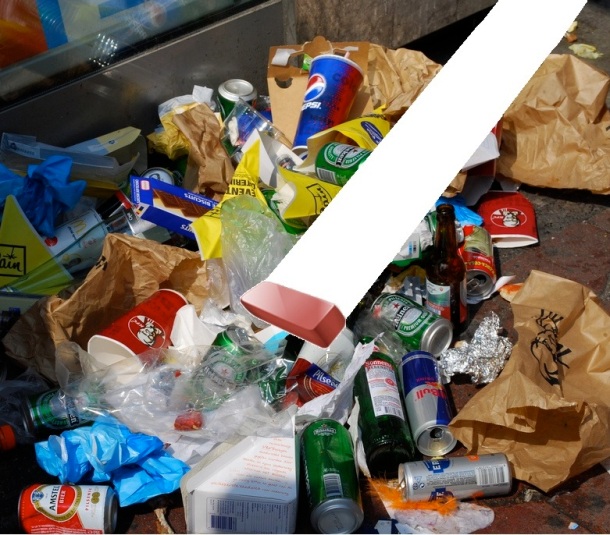Imagine you’ve got an unlimited budget to create the most efficient garbage system the world has ever seen. (Okay, maybe not the most glamorous hypothetical I’ve ever offered you. But earth’s human population is producing 1,300,000,000 tons of solid waste every year, and it’s got to go somewhere. Just think what a hero you’d be!) Now, under your awesome system, how much of that garbage would end up in a landfill? Think you could you cut it down to half? A quarter?
I guess it depends what your plan is, but if you want to beat Sweden, you’ll have to clock in under 4%! That’s right, out of every 100 grams thrown away by Swedes, only 4 actually end up in a landfill. (For comparison, the same statistic for the United States is 54%). How do they do this? Partly, as you might guess, with a robust and popular recycling program. But a lot of it is thanks to a process that I used to assume was a total environmental disaster. Let’s take a quick look at what it is, why it’s green on several levels, and how the modern version addresses my eco concerns (or doesn’t).
Waste-to-Energy
Waste-to-Energy is the preferred nomenclature in the industry, but let’s call a spade a spade: it’s burning trash. Most household waste can be burned, and therefore create energy. Oil and coal tend to be the popular choices for power because they burn easily and they’re energy-dense, but there’s no theoretical reason your house couldn’t run on old gym shoes or used pepperoni wrappers instead. And it turns out that burning trash is the secret to Sweden’s success.
Why Burning Trash is Awesome
Reduces landfill waste. Good, considering the earth’s land area is finite, while the amount of trash we can generate is endless. Landfills are also bad because they tend to make materials stick around longer before decomposing, and they also like to leak heavy metals and other toxins into the environment. Sweden’s got the right idea here – you don’t want to end up like Naples in 2008, do you?
Creates Energy. Sweden provides heat to 810,000 homes, and electricity to another quarter million, through its trash-burning power plants. That’s a lot of wattage that didn’t need to come from fossil fuels. And – if you squint at it just right – garbage is technically a renewable resource.
Free Building Materials. Some of the slag left over after incineration makes gravel, perfect for constructing highways and car parks.
Free Money. This is the best part: Sweden eliminates so much of its solid waste that it actually needs to import garbage to keep its power plants running at capacity. And naturally, this is a service other European countries are willing to pay for. When’s the last time someone offered to fill your gas tank and give you money in exchange?
Why Burning Trash Might Be Awful
Toxins. So with all these great things about burning trash, there’s got to be a catch, and there is. Burning something doesn’t necessarily destroy heavy metals or toxic chemicals. It does, however, transfer them to the air, essentially turning our atmosphere into one giant landfill – a pretty poor trade. Sweden’s garbage incinerators get around this problem with a series of technological advances. One gives an electric charge to dust particles in the smoke, then sucks them away with charged plates. Scrubber nozzles spray water and lime into the air to nab heavy metals, acids and SO2. Finally, the exhaust gets pushed through a catalytic converter much like the one on your car. Theoretically, the only exhaust products at the end are CO2 and water.
Carbon dioxide. The biggest threat from typical fossil fuels is not so much the fact that they’re finite, as that the carbon they release hastens global climate change. It is not clear from the literature, or from any news reports I can find, how much CO2 is generated from waste-to-energy systems. I’m sure it depends on exactly what’s in the waste stream, but I’d be very interested to see how its carbon emissions generally compare to those of oil or coal.
Efficiency. Meanwhile, the problem with fuel sources like corn ethanol is that it costs as much energy to produce as you get out of it at the end, making it essentially a wash. I don’t know how efficient waste-to-energy systems are. Running the plants, and powering all the decontamination steps mentioned above, surely takes some power. Then again, since the garbage isn’t useful for anything else, you could argue that the efficiency is irrelevant.
Conclusion
While I still have some concerns, I really have to tip my hat to Sweden for taking the lead here. Their success in creating a sustainable trash situation should be a model for everyone, and I hope the concept can be replicated elsewhere. Please add your opinions in the comments, and if you know of any other waste-to-energy situations around the world, mention that too.
My source for much of this information was this impressive waste-to-energy pamphlet (PDF) from the Swedish waste management service. H/t to Pachamama blog for the scoop.

Cool! I applaud any program that reduces landfill waste without producing too much other junk. Free energy, building materials and money is a great bonus!
I wholeheartedly agree! Thanks for commenting.
Great article! I do wonder how many toxins remain in that roadway gravel. On the plus side, these facilities might be able to recapture the heavy metals in the waste stream, which would be a huge advantage both in terms of lowering toxicity and economically, as many heavy metals can be rare and in high demand.
Thanks! I too wonder just what’s in that special gravel, hmm… Great idea re: heavy metals, too – they’re so rare, and we use them so extensively.